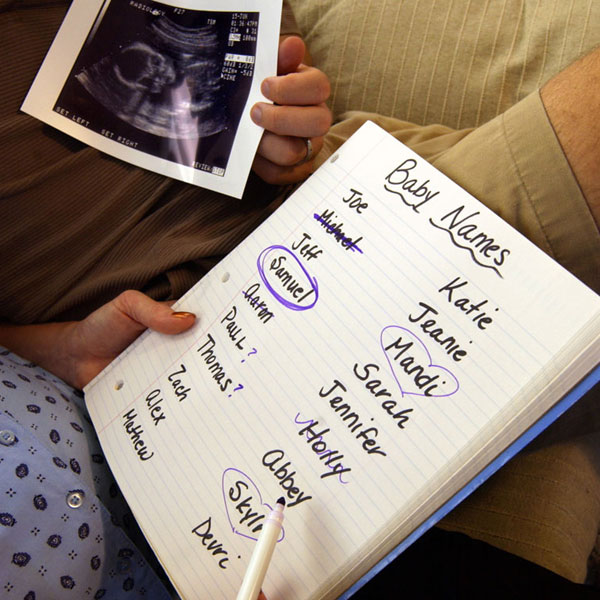Naming your child is one of those magical moments of parenthood. For adoptive parents, choosing the child’s name announces the growth of their family, and is an important step toward the finalization of their adoption.
As you consult baby-names books, or your family tree, and debate middle names and spellings for hours on end, take time to learn the legal considerations of naming. Doing so will smooth the process, whether yours is an international or a domestic adoption.
Naming in domestic infant adoption
In any U.S. adoption, the naming process begins with the child’s biological parents. Birth parents who have made an adoption plan may approach naming in one of several ways. The birth mother (and, perhaps, the birth father) may give the child a name of her own choosing, or may accept the name chosen by the adoptive parents. In most cases, birth parents defer to adoptive parents for the name given to the child.
It is not uncommon for birth parents and adoptive parents to choose a name together, before the child’s birth. The birth parents may, for example, ask that they be allowed to choose a middle name that has significance to them.
Other approaches are to give the child a name in which the initials match those of his birth mothers, and to ask the birth mother to help narrow the list of choices. By doing this, the adoptive family recognizes the birth family, and the child will know the respect that went into choosing his name. It is important that all the parties to an adoption discuss such issues before the child’s birth. Ultimately, the final decision rests with you and your family.
At the time of the child’s birth, the birth registrar at the hospital will provide the birth mother with a state birth registration form. After the name is chosen, an original birth certificate will be issued for the child, listing his name and the birth mother’s name. If the birth mother chooses not to name the child, the child will be identified on the certificate as Baby Boy or Baby Girl, followed by the birth mother’s last name.
The birth father’s name will also appear on the certificate if he complies with the registration requirements of the state. For example, in most states, the birth mother may not place the name of an unwed birth father on the certificate, unless the birth father agrees, in writing, to his paternity. In almost all cases, the adoptive parents last names will not appear on the original birth certificate.
In the process of finalizing their domestic adoption, parents may seek a legal name change for their child. The petition for adoption will contain the child’s new name (the child shall henceforth be known as), which will become his legal name on the day that the decree is signed by a judge.
After the finalization, the child’s state of birth will seal the original birth certificate and create a new birth certificate, listing the adoptive parents as the parents and the names they’ve chosen for the child. The child’s original birth certificate is not destroyed, but is accessible only by a court order. Amended birth certificates do not indicate that an adoption has taken place.
International considerations
In an international adoption, the court or administrative body finalizing the adoption in-country oversees the changing of the child’s name. In almost all cases, the child’s birth name has been established by the time of the adoption proceedings. The child’s name will be changed to the name chosen by the adoptive parents at the time of the issuance of the foreign adoption decree.
Because the child’s original name is an established part of her identity, parents often choose not to re-name their child. Many others retain a part of the child’s birth name to preserve a tie to her heritage and homeland. Parents adopting an older child, who is already aware of her name, should ask the child if she’d like to keep all or a part of her name.
There are rare cases in which the child’s name is not changed at the time of finalization in the sending country. In such instances, or in the case of incorrect spelling (or an incorrect name), parents can petition the court in their state for a name change and correct the child’s name as part of a U.S. re-adoption proceeding.
A child’s name represents a gift from a parent that makes that child unique, and it lasts a lifetime — rooting him to his new family. The name you choose, and how you chose it, will be a special part of your child’s adoption story.





